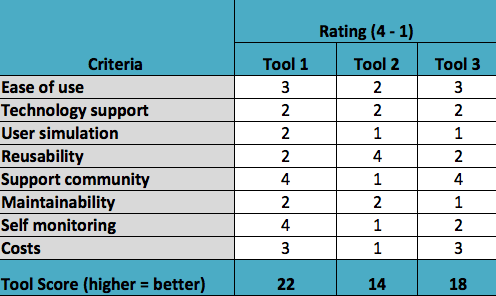Choosing Your Ideal Load Testing Platform
In today’s digital landscape, the performance of web applications is paramount to the success of businesses. Load testing ensures these applications can handle the expected user load without compromising speed or functionality. However, selecting the right load testing platform is an important decision that can significantly impact an organization’s efficiency and return on investment.
Sometimes, organizations fail to achieve the anticipated return on investment (ROI) from their load testing endeavors due to poor usability, high maintenance efforts, and limited reusability of automated testing scripts. In the last decade, plenty of open-source or cloud-based load testing solution providers have emerged in this expanding market. The demand for dependable applications has reached unprecedented levels, leading organizations to allocate more resources to performance engineering than ever before. This article aims to guide you through choosing your ideal load testing platform, highlighting key considerations and essential features to look out for when choosing your tool.
Understanding Your Needs
Before delving into the myriad of load testing platforms available, it’s essential to understand your organization’s unique requirements. Consider factors such as the size of your user base, the complexity of your applications, and the frequency of testing. Knowing your needs will help narrow down the options and ensure that the selected platform aligns with your specific goals.
Essential Characteristics of an Ideal Load Testing Platform:
- Ease of Use: A user-friendly interface is crucial for effective load testing. Every aspect of load testing, from script creation to test execution and results analysis, should be straightforward and user-friendly. Ideally, you should be able to create a script and conduct a load test within a matter of hours. And unlike many other tools, LoadView works effortlessly across encrypted connections and websites.
- Realistic User Simulation: Limited user simulation techniques can lead to inaccurate test results. With the rise of browser-based applications, the focus is more on real browser-based or headless user simulation. Although protocol-based applications may still be necessary in certain instances, prioritizing sufficient user simulation techniques is important. Incorrectly simulating user interactions can compromise the integrity of your test and render your results meaningless.
- Maintenance Efforts: Opt for a load testing platform that minimizes maintenance efforts. Constantly updating and adjusting scripts can be time-consuming and counterproductive. Choose a platform that allows for easy script maintenance and updates to keep your testing processes streamlined.
- Reusability of Automated Testing Scripts: The ability to reuse testing scripts across different scenarios and projects is a key factor in maximizing the efficiency of your load testing efforts. Load testing goes hand in hand with application monitoring on production. It’s a waste of money if you implement testing and monitoring scripts twice. A versatile platform should support script reusability, saving time and resources in the long run.
- Scalability: As your user base and applications grow, your load testing platform should be able to scale accordingly. Choose a platform that offers scalability, allowing you to simulate a wide range of user loads and adapt to the evolving needs of your organization. You’ll also want to look for tools that offer load testing from different geographical locations. For example, LoadView lets you perform load tests from over 40+ geo locations.
- Integration and Technology Support: Seamless integration with your existing development and testing tools is essential for a cohesive testing environment. Ensure that your chosen load testing platform can easily integrate with your preferred tools, such as continuous integration systems and your preferred alert tracking systems. A good load testing tool should also provide capture and replay support for the most frequently used devices and technologies such Firefox, Chrome, Internet Explorer, mobile devices, Web 2.0 techniques, and APIs.
- Costs: Initial licensing expenses can be a headache, leading many companies to lean towards open-source tools. It’s best if load testing tools offer low upfront costs and a pay-as-you-go option. Just keep in mind the upkeep and potential constraints of hosting open-source tools on your infrastructure.
- Support: Some user interaction testing can be challenging and may require the assistance of experienced developers or specialists. Choosing a tool that offers an extensive knowledge base or professional support is crucial as they can provide guidance on any tooling or solutioning issues.
Load Testing Platform Evaluation Grid
The market is flooded with numerous load testing solutions, leaving companies unsure about the extensive range of options, the specific solution to opt for, and the criteria for making informed decisions. To assist in selecting a testing solution, refer to the matrix provided below:

How to Utilize This Matrix:
1. Apply this matrix to each load testing solution on your shortlist.
2. Assign the appropriate rating for each criterion.
4 = Completely fulfills the criteria
3 = Mostly fulfills the criteria
2 = Does not fulfill the criteria
1 = Barely fulfills the criteria
3. Calculate the score
This evaluation matrix serves as a comprehensive tool to systematically assess and compare load testing solutions, aiding organizations in making well-informed decisions based on their specific needs and priorities.
Navigating the Market
The load testing market has witnessed a surge in both open-source and cloud-based solutions over the past decade. Evaluate the available options carefully, considering factors like vendor reputation, customer reviews, and support services. A well-established provider with a track record of delivering reliable solutions can provide added confidence in your choice.
Conclusion
Choosing the ideal load testing platform is a strategic decision that directly impacts the performance and reliability of your web applications. By understanding your organization’s needs and prioritizing essential characteristics such as usability, maintenance efforts, and script reusability, you can make an informed decision that aligns with your goals. Take the time to evaluate the available options and select a load testing platform that empowers your team to deliver high-performance applications in today’s competitive digital landscape.